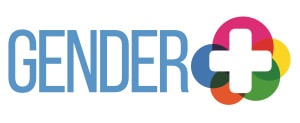Congratulations! It seems that you are interested in finding out how gender inclusive your organisation is and making it even more so.
The following questions will guide you through some good practices which will help make your organisation a place of equality and harmony. The questionnaire has been specifically designed for VET (Vocational Education and Training) organisations but can also be utilised by those employed in other sectors. Each of the responses matches a percentage of your organisation's gender footprint. Please note that the lower the footprint, the more gender inclusive your organisation is. For example, the answer '3-4 times a year' represents 4% of the footprint, while the answer 'Once a month' represents 1% of the footprint, which is a better score and means that your organisation has gender inclusive policy more integrated into its provision. Thus, an overall footprint of 30% is a better score than a footprint of 50%.
Once you complete the questionnaire, you will be able to see your organisation's overall footprint and thus, how gender inclusive it is. If you choose to register on our platform, you will also be able to compare your organisation's gender inclusivity to other organisations, share your organisation's existing good practices, and find out about other countries' good practices. Plus, you will have access to the Gender+ Charter, which includes policies indicative of gender inclusive organisations, which you can adopt in your organisation as well. Once your organisation is rated with a gender footprint of 25% or less, you will be able to download the Gender+ kitemark and certificate, demonstrating that your organisation is an 'Aspiring Gender Champion'.
The responses you give will remain anonymous and be used to assess your organisation's gender footprint only. The questionnaire will take about 10 minutes to complete.
1 / 24
Would you say that your organisation is characterised by mutual respect and understanding?
2 / 24
Does your organisation offer its members training opportunities which help them recognise, understand and respect gender diversity?
3 / 24
Some organisations/ institutions/ public services have gender neutral facilities (toilets, locker rooms, showers etc.) that provide options for privacy without stigmatising anyone. Do you follow this policy in your organisation?
4 / 24
Is there any printed or online reading material regarding gender diversity and equality produced, circulated inside and/ or distributed by your organisation?
5 / 24
Does your organisation have a specific policy document promoting gender equality and inclusion policies?
6 / 24
Are there any staff members who function as leaders around gender diversity work or issues? For instance, individuals who act as role models, organise events, information days regarding gender diversity and equality etc.
7 / 24
How often does your organisation organise/ take part in events, information days etc. regarding gender diversity and equality and addressing stereotypes and discrimination?
-
Once or twice a year
-
3-4 times a year or more often
8 / 24
Would you say that your organisation offers its staff and learners the opportunity to take part in decision-making about policies that affect them, regardless of their gender?
9 / 24
Would you say that your organisation's curricula and training programmes are free from gender stereotypes and discrimination based on binary roles (for example, typical 'male'/ 'female' jobs or models)?
10 / 24
Does your organisation involve mentors/ advisors/ psychologists/ social workers, specially trained to deal with the topic of gender diversity, and to provide support to your organisation’s members and learners on these issues? If yes, how often?
-
Once or twice a year
-
3-4 times a year or more often
11 / 24
Does your organisation make sure that the material they use (videos, educational texts or any other kind of training material) does not reproduce gender stereotypes and forms the basis for free expression and open discussion?
12 / 24
Does your organisation offer its staff/ learners opportunity to choose subjects/ classes, take part in learning activities, work-based experience and pursue career opportunities based on their talents, interests and aspirations, regardless of their gender?
13 / 24
Does your organisation ensure that the staff members’/ learners’ preferred names and pronouns are honoured and respected?
14 / 24
Does your organisation promote language that is inclusive of all communities and which does not reinforce binary stereotypes about gender?
15 / 24
Would you say that your organisation places its learners in teaching groups in ways that do not rely on gender, such as the 'green team', 'red team' etc.?
16 / 24
Does your organisation provide support and assistance to self-organised groups, such as clubs and interest groups of people from minorities, including LGBTQ (Lesbian, Gay, Bisexual, Transsexual, Queer/ Questioning)? If yes, how often?
-
Once or twice a year
-
3-4 times a year or more often
17 / 24
Overall, would you say that in your organisation everyone is trained to recognise and resist stereotypes?
18 / 24
Overall, would you say that in your organisation everyone is trained to not tolerate mistreatment (discrimination, stereotyping, teasing, bullying, harassment) based on gender expression or identity?
19 / 24
Overall, would you say that in your organisation everyone is trained to protect members from discrimination because of their gender?
20 / 24
Does your organisation prepare tutors and administrative staff to counteract mistreatment that refers to gender identity and gender expression?
21 / 24
Does your organisation challenge comments based on gender stereotypes and sanction hate speech in public in the name of reinforcing the principles of equal treatment and acceptance of all vulnerable communities?
22 / 24
Does your organisation ensure supervision of hallways, cafeterias and other communal areas to increase a sense of safety?
23 / 24
Does your organisation have a specific plan for preventing and addressing incidents of gender-based violence (verbal or physical), bullying, cyberbullying etc.?
24 / 24
Overall, would you say that your organisation is a welcoming and accepting environment in which all members’ gender identity is recognised, protected and supported?
